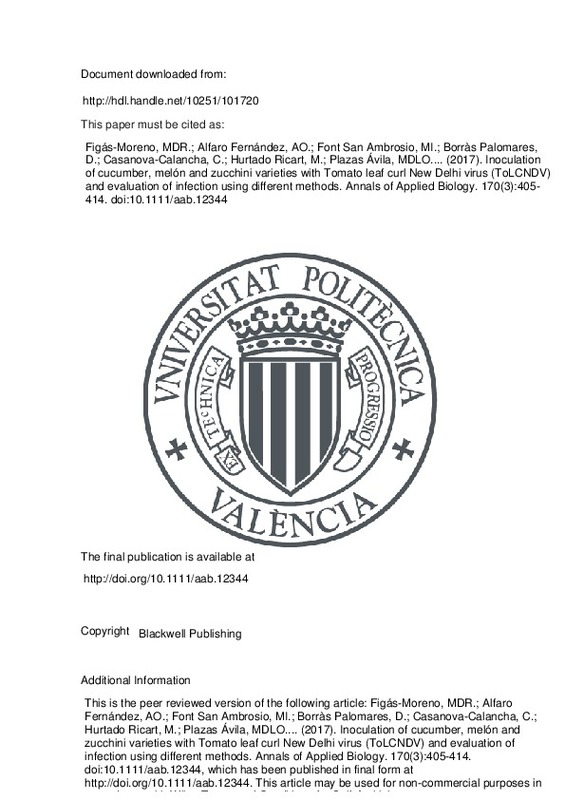JavaScript is disabled for your browser. Some features of this site may not work without it.
Buscar en RiuNet
Listar
Mi cuenta
Estadísticas
Ayuda RiuNet
Admin. UPV
Desde el lunes 3 y hasta el jueves 20 de marzo, RiuNet funcionará en modo de solo lectura a causa de su actualización a una nueva versión.
Inoculation of cucumber, melón and zucchini varieties with Tomato leaf curl New Delhi virus (ToLCNDV) and evaluation of infection using different methods
Mostrar el registro completo del ítem
Figás-Moreno, MDR.; Alfaro Fernández, AO.; Font San Ambrosio, MI.; Borràs Palomares, D.; Casanova-Calancha, C.; Hurtado Ricart, M.; Plazas Ávila, MDLO.... (2017). Inoculation of cucumber, melón and zucchini varieties with Tomato leaf curl New Delhi virus (ToLCNDV) and evaluation of infection using different methods. Annals of Applied Biology. 170(3):405-414. doi:10.1111/aab.12344
Por favor, use este identificador para citar o enlazar este ítem: http://hdl.handle.net/10251/101720
Ficheros en el ítem
Metadatos del ítem
| Título: | Inoculation of cucumber, melón and zucchini varieties with Tomato leaf curl New Delhi virus (ToLCNDV) and evaluation of infection using different methods | |||
| Autor: | Borràs Palomares, Dionís Hurtado Ricart, María | |||
| Entidad UPV: |
|
|||
| Fecha difusión: |
|
|||
| Resumen: |
[EN] The disease caused by Tomato leaf curl New Delhi virus (ToLCNDV), which is naturally transmitted by the whitefly Bemisia tabaci, causes important economic losses in cucurbit crops. The availability of simple and ...[+]
|
|||
| Palabras clave: |
|
|||
| Derechos de uso: | Reserva de todos los derechos | |||
| Fuente: |
|
|||
| DOI: |
|
|||
| Editorial: |
|
|||
| Versión del editor: | http://doi.org/10.1111/aab.12344 | |||
| Descripción: |
|
|||
| Tipo: |
|
recommendations
Sorry the service is unavailable at the moment. Please try again later.







![[Cerrado]](/themes/UPV/images/candado.png)


